|
Help Your Leak Detector Operators Find Leaks!
Is
the most important factor in leak detector performance the speed of finding small
leaks? What about how the operator uses this high-performance machine?
Usually, performance
evaluations of leak detectors are carried out under ideal conditions
that enhance leak detection. But we know that real life leak detection
is a much ruder world; noisy, drafty, and fully of distractions. While
a system’s ability to find the smallest detectable leak rate
in the shortest possible time is certainly important, what really matters
is ensuring that the operator actually detects the leak.
What can a leak
detector do to increase the probability that your operator will find
the leak?
Ability
to detect leaks at any angle
In real life, a leak is hard to locate. No
guarantees on a certain orientation to a leak outlet (as when you evaluate
a leak detector with a test leak). It’s key that the leak detector
picks up the leak regardless of orientation to the test leak outlet.
INFICON sniffer leak detectors show the same leak rate regardless of
the orientation of the sniffer tip to the outlet of a leak. Test this
by placing the sniffer tip at an angle to the leak outlet and noting
the leak rate signal.
Ability
to detect leaks at a distance from the leak
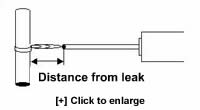 Often
a joint to be tested cannot be reached (blocked by other components
or limited leak testing operation time) or there is simply not enough
time to check each joint thoroughly. In this case, it is important
that the leak detector shows a significant leak rate, even at a distance
from the leak. INFICON sniffer leak detectors show a significant leak
rate signal even at increased distances. Often
a joint to be tested cannot be reached (blocked by other components
or limited leak testing operation time) or there is simply not enough
time to check each joint thoroughly. In this case, it is important
that the leak detector shows a significant leak rate, even at a distance
from the leak. INFICON sniffer leak detectors show a significant leak
rate signal even at increased distances.
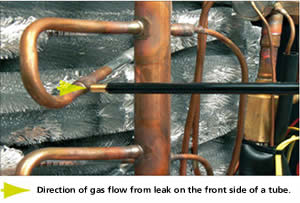
|
Protec
P3000XL |
Protec
P3000 |
Vacuum
leak detector w/ sniffer line (appr. 25 sccm) |
Hydrogen
leak detector (no flow) |
Ecotec
E3000 |
HLD5000 |
| 0
mm |
100% |
100% |
100% |
100% |
100% |
100% |
| 2
mm |
100% |
100% |
40% |
10% |
100% |
100% |
| 5
mm |
100% |
80% |
18% |
0% |
98% |
95% |
| 10
mm |
98% |
40% |
8% |
0% |
80% |
35% |
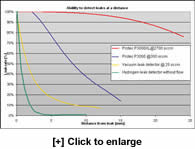 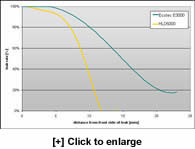
Ability
to detect leaks on the backside of a tube joint
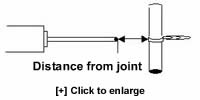 When
the backside of a joint cannot be reached by the operator (blocked
by other components or the cycle time may be insufficient) it becomes
difficult or impossible to detect a leak. INFICON sniffer leak detectors
are optimized for this situation; the Protec P3000XL offers the best
performance in the field. When
the backside of a joint cannot be reached by the operator (blocked
by other components or the cycle time may be insufficient) it becomes
difficult or impossible to detect a leak. INFICON sniffer leak detectors
are optimized for this situation; the Protec P3000XL offers the best
performance in the field.
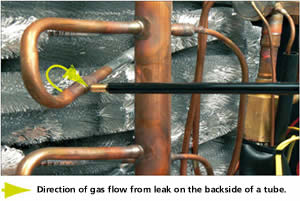
|
Protec
P3000XL |
Protec
P3000 |
Vacuum
leak detector with sniffer line (approx. 25 sccm) |
Hydrogen
leak detector (no flow) |
Ecotec
E3000 |
HLD5000 |
| 0
mm |
98% |
38% |
5% |
0% |
70% |
65% |
| 2
mm |
95% |
25% |
4% |
0% |
50% |
45% |
| 5
mm |
88% |
13% |
3% |
0% |
30% |
25% |
| 10
mm |
72% |
8% |
0% |
0% |
15% |
15% |
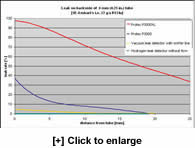 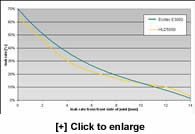
Ability
to detect leaks in drafts
In certain situations, the leak detector
needs to work in drafts caused by ventilation, moving belts, etc. The
higher the flow through the sniffer line, the less a leak detector will
be affected by drafts.
|








